How to Sit Properly At Your Desk
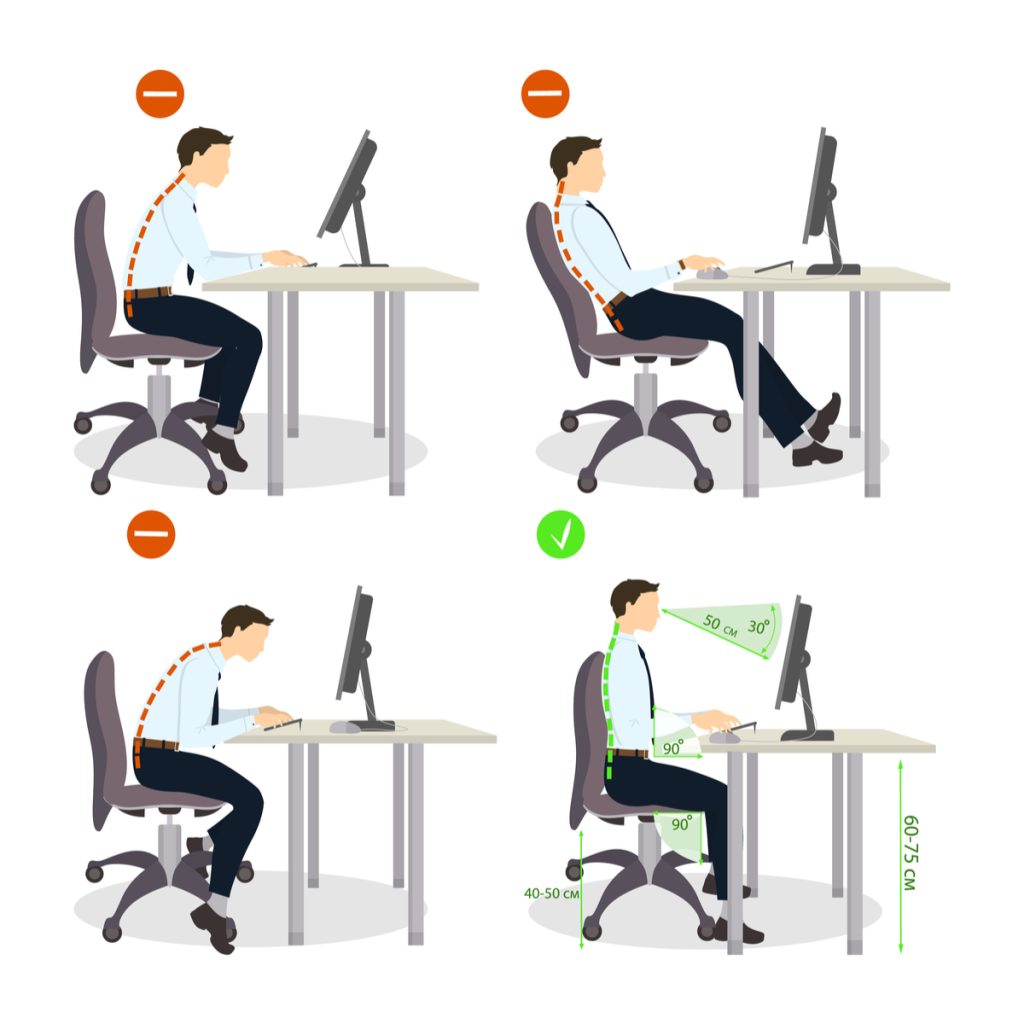
Many of us go to work, clock in and take a seat at our desks.
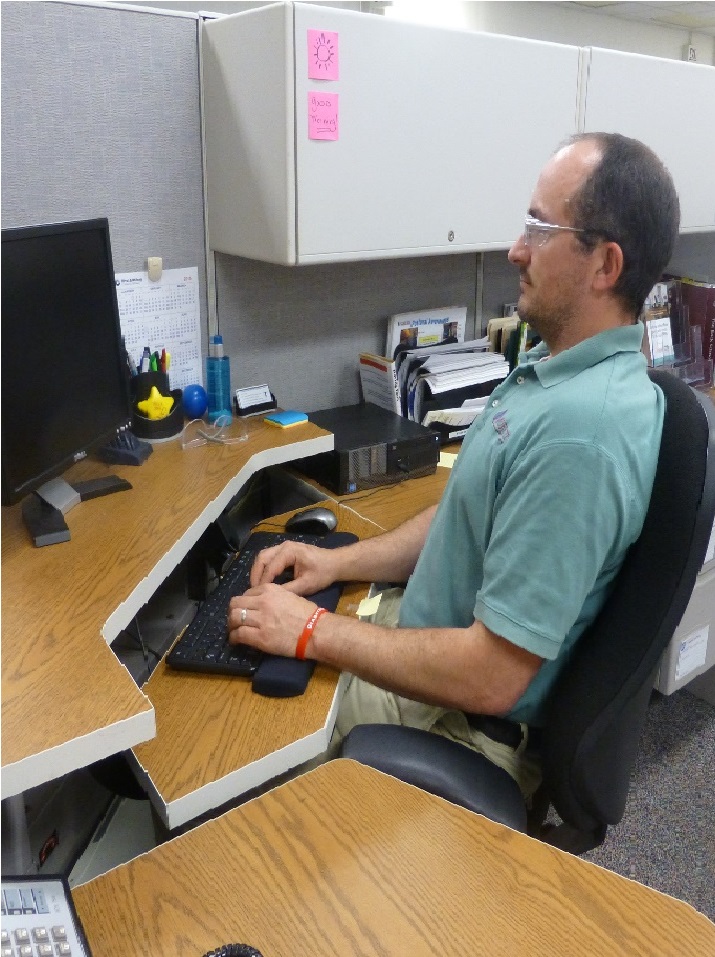
Some of us have the ability to take temporary breaks from our work tasks for a brief stretch or walk around the office building.
Unfortunately, many of us working the average 9-5 don’t have that option, especially if the nature of the work is very demanding. This means sitting in one position for about 6-8 hours. This also means having both long and short term effects of sitting that could prove harmful to one’s health, including:
- Weak Legs/Glutes
- Stiff Neck/Shoulders
- Anxiety & Depression
- Tight Hips
- Bad Back
- Weight Gain
If you’re already experiencing one or more of these problems, knowing how to sit properly while at work could help to either prevent future issues or provide relief.
Make Your WorkStation Seat-Friendly
Yes, we could start by talking about what kind of chair can be used to promote relief and comfortability, but a large part of sitting properly at one’s desk relies on the arrangement of the workstation. Before getting started with the work day, ask yourself these questions:
- Are my eyes in line with the area of the screen that I focus on most?
- Is what I need most within arm’s reach?
- Is my keyboard adjusted to assure maximum comfort for my wrists, shoulders and neck?
If you are unable to answer these questions confidently, you should seriously consider adjusting your workstation to meet these requirements. You can use a Ergonomic Desk and Chair Height Calculator to find your exact ergonomic office setup.
As for how you should sit properly at your desk, here is what you should do with different parts of you body:
Back
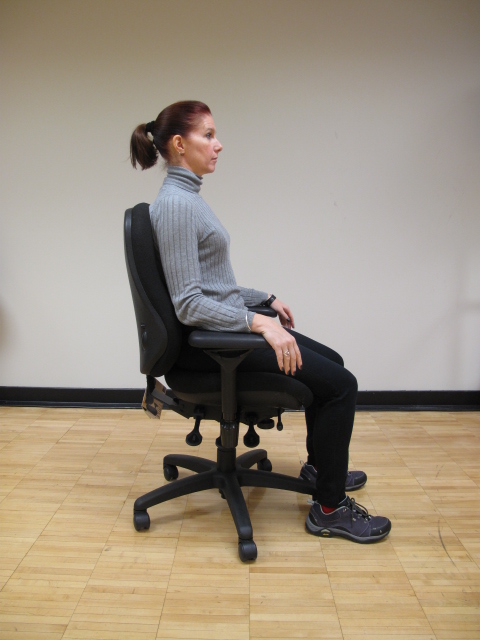
To avoid spinal stress you should do your very best to sit upright, making sure that your upper back is straight and that your lower back curves to the shape of the chair. If your chair doesn’t provide proper spinal support, don’t be afraid to bring a pillow or an extra jacket to work! Getting the proper support for your back is important because sitting improperly could lead to lower back pains and sprains including kyphosis (other wise known as “hunchback syndrome”) and disc herniation.
Arms
Did you know that when your arms are extended or stretched forward, you have potential to lose strength in your upper back, resulting in shoulder and upper back pain? You can avoid this by keeping your arms at a 90 degree angle, in a comfortable resting position. This is where the armrest of your chair comes in handy. After all, that’s what it’s there for!
Legs and Feet
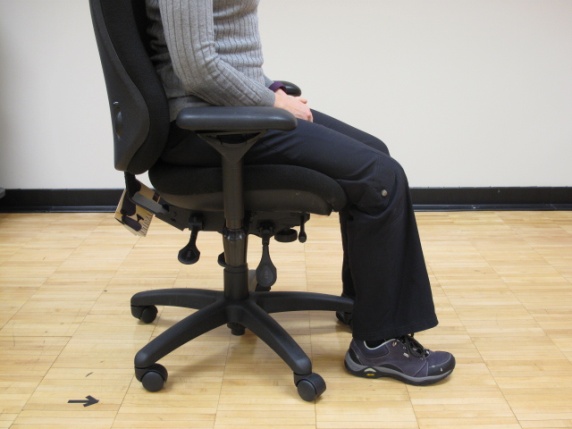
Sitting in one place comes with its own issues, but having your legs in certain positions (crossed) can seriously decrease the necessary amount of blood flow to run through your body. Have you ever sat down with your legs crossed, toes touching the floor and felt an uncomfortably tingly feeling in your legs? If so, consider positioning your upper legs at a 90 degree angle from your body. If you aren’t the tallest person in the world, getting a foot rest is the best way to go.
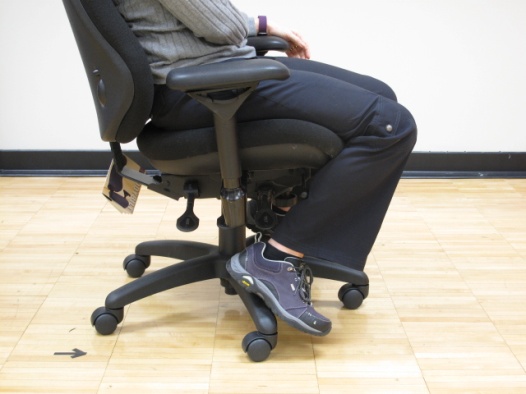
We understand that sitting properly can prove to be somewhat difficult at first, but we’re sure you’ll feel the difference overtime!



